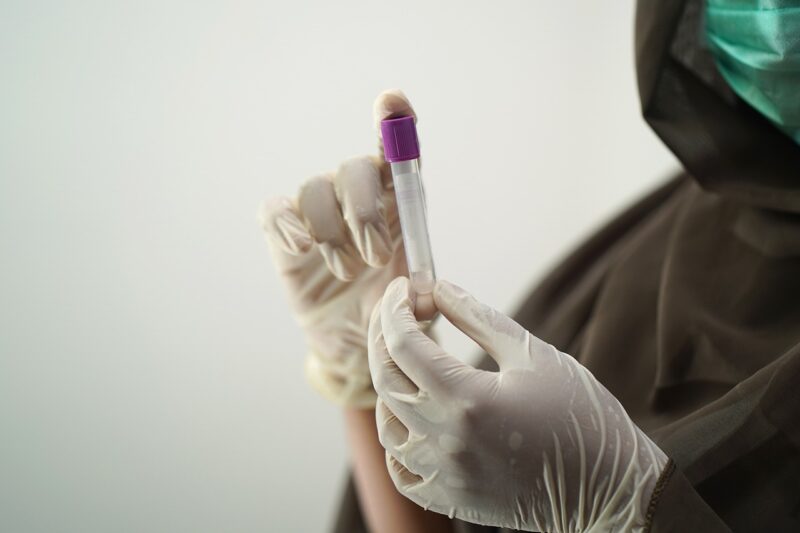How Silver Nanoparticles Are Being Used in Cutting-Edge Medical Research
November 14, 2024

Silver nanoparticles (AgNPs) have emerged as a versatile and powerful tool in the realm of medical research and application, boasting numerous properties that make them ideal candidates for a variety of therapeutic and diagnostic purposes. With unique physical and chemical characteristics, these nanoparticles are small, typically ranging from 1 to 100 nanometers in diameter, allowing them to penetrate cells effectively and interact with biological systems in ways that bulk silver cannot. This article explores the fascinating applications of silver nanoparticles in cutting-edge medical research, delving into their role in drug delivery, antimicrobial treatments, cancer therapy, and more.
1. The Unique Properties of Silver Nanoparticles
Silver nanoparticles possess a range of advantageous properties that make them effective in medical applications:
- Antimicrobial Activity: Silver has been recognized for its antibacterial properties for centuries, and at the nanoscale, its efficacy is markedly enhanced. AgNPs can disrupt bacterial cell membranes, inhibit bacterial respiration, and interfere with DNA synthesis.
- Biocompatibility: Studies have shown that silver nanoparticles can be well-tolerated by human cells, presenting minimal toxicity at low concentrations while still being effective against pathogens.
- Surface Plasmon Resonance (SPR): The ability of silver nanoparticles to resonate with light enables their use in imaging and diagnostic applications, enhancing contrast in medical imaging techniques such as MRI and ultrasound.
- High Surface Area to Volume Ratio: The large surface area relative to volume allows for better interaction with biological agents, facilitating drug delivery and therapeutic functions.
These properties make silver nanoparticles one of the most studied materials in the field of nanomedicine.
2. Drug Delivery Systems
One of the most prominent applications of silver nanoparticles in medical research is their role as carriers in drug delivery systems. By encapsulating therapeutic agents within silver nanoparticles, scientists can enhance the solubility and stability of these drugs, which can often face challenges due to poor bioavailability. Here’s how silver nanoparticles are being utilized in drug delivery:
- Targeted Delivery: Silver nanoparticles can be functionalized with various targeting agents that allow them to home in on specific cells, such as cancer cells, which ensures that therapeutic agents are delivered precisely where needed, minimizing side effects on healthy tissues.
- Controlled Release: By manipulating the size and surface properties of silver nanoparticles, researchers can design systems that control the release of drugs over time, leading to enhanced therapeutic efficacy and reduced frequency of dosing.
- Dual Therapy: Silver nanoparticles can combine therapeutic agents in a single delivery system, providing both anti-cancer and anti-pathogen effects in a unified approach to treatment, particularly useful in treating multi-drug-resistant infections in cancer patients.
The advancements in drug delivery mechanisms using silver nanoparticles hold the potential to revolutionize how treatments are administered in modern medicine.
3. Antimicrobial Treatments
The historical use of silver as an antimicrobial agent has transitioned to nanotechnology, where silver nanoparticles are being tested and implemented as potent antimicrobial treatments:
- Infection Control in Medical Devices: Silver nanoparticles are increasingly incorporated into coatings for medical devices such as catheters and implants to prevent biofilm formation and reduce the risk of catheter-associated infections.
- Wound Dressings: Silver nanoparticles in wound dressings enhance healing processes by preventing bacterial infection, which is critical in wound management and surgical recovery.
- Topical Antiseptics: Silver nanoparticle-infused creams and gels are showing promise as effective topical antiseptics, proving especially valuable in treating burns and chronic wounds that are at high risk of infection.
These applications are critical for addressing increasing concerns about antimicrobial resistance and the effectiveness of traditional antibiotics.
4. Cancer Therapy
Silver nanoparticles are at the forefront of innovation in cancer therapies, demonstrating remarkable effectiveness in both treatment and diagnosis:
- Photothermal Therapy: AgNPs can convert light energy into heat, selectively targeting and destroying cancer cells when exposed to near-infrared light. This targeted approach minimizes damage to surrounding healthy tissues, making it a promising alternative to traditional cancer treatments.
- Enhanced Imaging Techniques: The SPR properties of silver nanoparticles enhance imaging capabilities, allowing for better visualization of tumors in diagnostic procedures and characterization of tumor properties for personalized treatment planning.
- Combination Therapies: Silver nanoparticles can be combined with chemotherapeutic agents, potentially enhancing their effectiveness while reducing side effects. Their unique properties enable synergistic effects that may lead to improved patient outcomes.
These advancements present exciting possibilities for overcoming challenges in cancer treatment, specifically in targeting resistant tumors.
5. Future Prospects and Challenges
As research into silver nanoparticles continues to expand, several promising areas have been identified:
- Regulatory Frameworks: As with any novel medical treatment, establishing clear regulatory guidelines is crucial for the safe use of silver nanoparticles in medical applications. Researchers and manufacturers must work together to ensure protocols are in place for their development and use.
- Environmental Impact and Safety: The ecological consequences of widespread silver nanoparticle use must be explored to ensure they do not adversely affect the environment. Additionally, long-term studies on biocompatibility and potential side effects in human use are essential.
- Continued Innovation: The synergistic potential of silver nanoparticles combined with other nanomaterials or therapies is an exciting area for exploration, offering the prospect of next-generation therapies that are both more effective and more tailored to individual patients’ needs.
Silver nanoparticles represent a significant innovation in the medical field, bridging the gap between traditional methods and cutting-edge technology to pave the way for improved healthcare solutions.
Conclusion
In conclusion, the applications of silver nanoparticles in medical research are rapidly advancing, showcasing their versatility, efficacy, and potential to improve patient outcomes in various healthcare settings. From drug delivery systems and antimicrobial treatments to groundbreaking cancer therapies, silver nanoparticles are making waves in nanomedicine. As research and innovation continue, these tiny particles hold the promise of reshaping the future of medical science, providing effective solutions to some of the most pressing health challenges of our time. To harness their potential responsibly, further investigation into their safety and environmental impacts will be imperative, ensuring that silver nanoparticles can enhance human health without compromising safety or ecological integrity.







